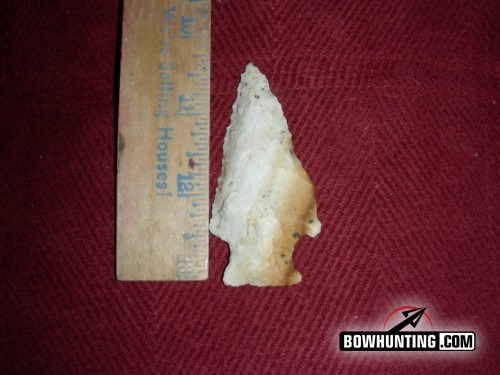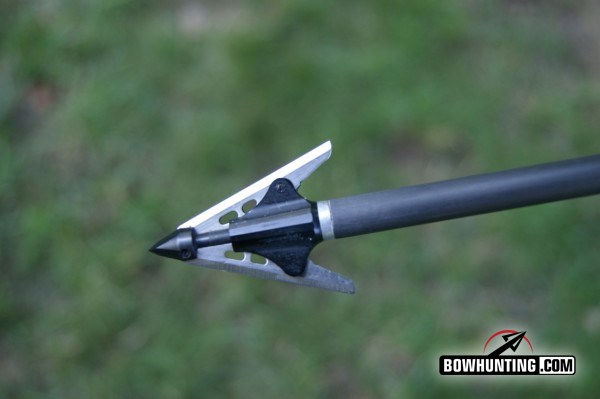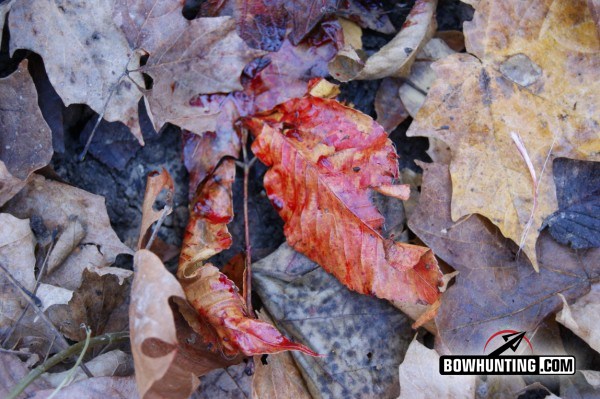LAST UPDATED: May 8th, 2015
Every year the forums at Bowhunting.com have way too many threads like “I hit a deer and can’t find it, now what?” In my opinion, it’s too late now, in a lot of cases the work should have been done before the season actually started. I will say that bad shots can happen to anyone at any time, but a good share of the bad hits happen to those who haven’t prepared properly before ever taking the shot.
Rule #1: Know where to hit the animal you are hunting.
This would be considered a good hit. Do you know exactly where the heart is located in a deer?
I’ll wager a fair amount of money that a lot of bow hunters have never seen the inside of a deer or even studied the anatomy of the species they are hunting. This simple task could prevent many bad hits in itself. You have to know where to hit the animal to effectively kill it. If you don’t know EXACTLY where the vitals are located, how do you expect to make a quick clean kill? I guarantee a good number of bow hunters could not point to the exact location of the heart in a real deer’s body. And I promise you that most bow hunters would be off if they tried to draw the front leg and shoulder bones on a live deer. They are way forward compared to where most people think they are.
This should be required study material in any hunter education class.
Then put it to use on the real thing.
The area we all strive to place the arrow in is the heart/lung area. Put a razor sharp broadhead through there and you will watch a good number of your deer tip over. They can’t run very far with their lungs full of blood. And in my opinion it doesn’t matter what broadhead you send through the boiler room as long as it is sharp. Don’t get caught up in all of the hype of this head vs that head. Any legal, razor sharp broadhead will do the job as long as it is put in the right spot. The Indians used to kill them with sharp rocks.
The Indians used to kill deer with these.
I prefer these.
Rule #2: Only take high percentage shots.
How many times have you read or heard, “He was about to leave so I HAD TO TAKE THE SHOT”? NO YOU DIDN”T!! If you wait the deer might offer you a better angle or a broadside shot before leaving. Plus, if the deer is nervous and about to leave, chances he are his vitals won’t be where they were by the time your arrow gets there anyhow resulting in a bad hit. I’ve hunted long enough and observed enough deer to know that shooting at a nervous deer is asking for trouble. Your bow is not fast enough to beat the reaction time of a nervous deer. They can drop and whirl before your arrow ever gets there. Even calm deer will usually have some kind of reaction at the shot. I have really noticed this a lot more since I have been filming my hunts. It’s kind of fun to play the arrow flight back and forth to see just how much the deer moves from the shot to impact.
Broadside and quartering away are the only ethical shots in most cases. These two offer the best chance at an unobstructed path to the heart/lung area. The ribs on the side of the deer offer little resistance to a well placed arrow. The frontal or quartering to shot can be deadly, but the vitals are much better protected from these angles by the shoulder bones and the front of the rib cage.
Rule #3: Hit where you aim.
You have to be able to put the arrow where it needs to be. This can only be done by practicing and then practicing some more. The time to sight in and tune your bow is not the night before opening morning. Bow hunting should be a year round undertaking. We all need to practice throughout the year to keep our muscles in shape and our equipment in tune. And when you practice, practice in hunting situations. Shoot from tree stands, or sitting in ground blinds, or kneeling if you will be stalking.
Make sure you know your own effective range. If you plan on shooting game out to 30 yards, make sure every arrow hits in the kill zone at that range. Then practice longer shots. This will make the shorter ones easier.
I’m not saying following all of these rules will eliminate all bad hits. There are way too many variables in the woods for that to be true. But if we plan ahead and know our game, equipment and our limitations, maybe we can eliminate a lot of those “What do I do now” threads.
May all your blood trails be short ones.

.jpg)
.jpg)
.jpg)








